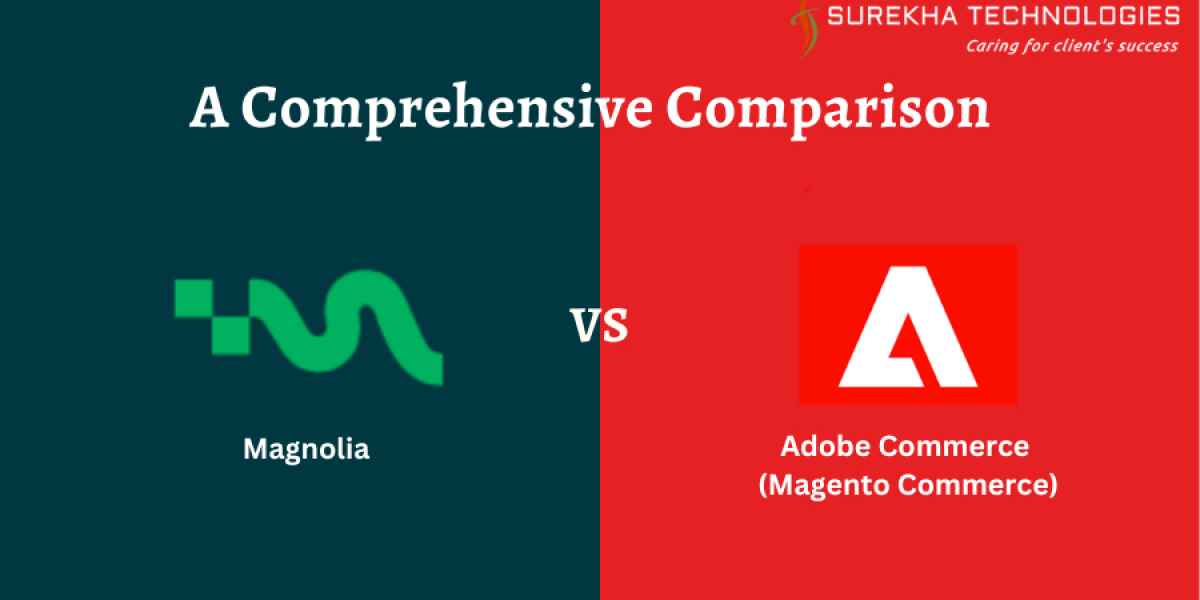In the rapidly evolving world of eCommerce and digital experience platforms, businesses must choose solutions that align with their goals. Among the popular platforms in this domain, Adobe Commerce (formerly Magento Commerce) and Magnolia stand out. Both offer robust capabilities, but their approach, features, and integrations cater to different types of businesses.
This article explores these two platforms in detail, helping you understand their strengths and weaknesses, and ultimately aiding in selecting the right fit for your business needs.
What is Adobe Commerce (Magento Commerce)?
Adobe Commerce, powered by Magento, is a leading eCommerce platform renowned for its scalability and customization options. As part of the Adobe Experience Cloud, it integrates seamlessly with tools like Adobe Experience Manager, Adobe Analytics, and Adobe Target, making it a powerhouse for personalized eCommerce experiences.
Key highlights of Adobe Commerce include:
- Scalability: Ideal for businesses of all sizes, from startups to large enterprises.
- Customizability: Open-source foundations make it highly adaptable to unique business needs.
- Robust Integrations: Works seamlessly with the Adobe ecosystem for a comprehensive digital strategy.
- Advanced Features: Includes AI-driven product recommendations, dynamic pricing, and in-depth analytics.
For businesses seeking tailored solutions, partnering with an Adobe Commerce Magento solutions provider ensures the platform is optimized to deliver results.
What is Magnolia?
Magnolia is a content management system (CMS) designed for enterprises that prioritize flexibility and a content-first approach. It emphasizes the separation of content and presentation, allowing businesses to deliver consistent experiences across multiple channels.
Key highlights of Magnolia include:
- Content-First Design: Focuses on managing content independently of the platform it’s delivered on.
- Ease of Use: Offers an intuitive interface that allows marketing teams to manage content without heavy reliance on IT.
- Omnichannel Capabilities: Ensures seamless delivery across websites, apps, social media, and IoT devices.
- Modular Architecture: Its lightweight, modular design allows for scalable and flexible development.
Magnolia is particularly suited for businesses focused on delivering omnichannel content experiences with minimal operational complexity.
Feature Comparison: Adobe Commerce vs. Magnolia
1. Core Functionality
- Adobe Commerce: Primarily an eCommerce platform, Adobe Commerce excels in managing product catalogs, processing transactions, and optimizing the customer journey. It offers extensive options for personalizing the buying experience, making it ideal for retail and B2B businesses.
- Magnolia: While not a dedicated eCommerce platform, Magnolia excels in managing and delivering content. Its strength lies in crafting digital experiences, making it a great choice for content-driven organizations.
2. Integration Capabilities
- Adobe Commerce: Integrates seamlessly with the Adobe Experience Manager development company ecosystem and third-party applications. This provides businesses with a unified digital marketing and eCommerce strategy.
- Magnolia: Offers APIs and connectors to integrate with eCommerce platforms like Magento or Salesforce Commerce Cloud, ensuring a connected experience for businesses using multiple tools.
3. User Experience
- Adobe Commerce: Provides advanced customization for customer journeys, enabling businesses to deliver unique, engaging shopping experiences.
- Magnolia: Focuses on empowering marketers to manage content independently, ensuring faster content delivery without IT dependency.
4. Scalability and Performance
- Adobe Commerce: Built to scale, it supports large product catalogs and high transaction volumes, making it suitable for enterprise eCommerce.
- Magnolia: Offers scalability through its modular architecture, but it is less equipped for handling complex eCommerce operations directly.
5. Personalization
- Adobe Commerce: Leverages Adobe Sensei (AI) to deliver product recommendations and dynamic pricing based on user behavior.
- Magnolia: Focuses on personalizing content delivery through contextual targeting and omnichannel capabilities.
Use Cases: When to Choose Adobe Commerce or Magnolia
Adobe Commerce is Ideal for:
- Businesses focused on eCommerce as their primary revenue stream.
- Enterprises requiring robust product management and dynamic pricing.
- Companies that benefit from integration with the Adobe ecosystem, including Adobe Experience Manager development services.
- Retail and B2B organizations seeking AI-driven personalization.
Magnolia is Ideal for:
- Content-driven businesses prioritize consistent experiences across multiple channels.
- Enterprises seeking a lightweight CMS with flexible integration capabilities.
- Organizations that already have a dedicated eCommerce platform but need a robust content management solution.
Strengths and Weaknesses of Adobe Commerce
Strengths
- Comprehensive eCommerce tools, including order management, product recommendations, and analytics.
- Powerful integrations with Adobe’s marketing and content tools.
- Open-source flexibility for custom development.
Weaknesses
- Complex implementation requires expertise; businesses may need support from an Adobe Commerce Magento solutions provider.
- The higher total cost of ownership compared to standalone platforms.
Strengths and Weaknesses of Magnolia
Strengths
- Simplifies content management, empowering non-technical teams.
- Highly modular and flexible architecture.
- Strong omnichannel content delivery capabilities.
Weaknesses
- Limited eCommerce capabilities; businesses must rely on integrations for full functionality.
- Requires expertise to configure and maximize its modular design.
Costs and Implementation Considerations
Adobe Commerce
Implementation costs for Adobe Commerce vary depending on the level of customization and scale. Partnering with an Adobe Experience Manager development company ensures smooth integration and better ROI. However, ongoing maintenance and subscription costs can add up for enterprises with complex requirements.
Magnolia
Magnolia’s licensing costs are typically lower, and its modular setup reduces upfront investment. However, businesses with extensive customization needs may incur additional costs during implementation.
Future Trends in Adobe Commerce and Magnolia
Adobe Commerce Trends
- Greater use of AI for personalization and customer insights.
- Enhanced integration with IoT devices and voice commerce platforms.
- Continued focus on omnichannel eCommerce strategies.
Magnolia Trends
- Expanded capabilities for headless CMS architecture.
- Improved support for multi-site and global content management.
- Innovations in workflow automation for faster content delivery.
Conclusion
Both Adobe Commerce and Magnolia are powerful platforms, but their use cases differ significantly. Businesses focused on eCommerce, especially those already leveraging Adobe tools, will benefit from Adobe Commerce Magento solutions. On the other hand, organizations prioritizing omnichannel content delivery and streamlined content management should consider Magnolia.
In an increasingly competitive digital landscape, selecting the right platform is the first step toward achieving seamless digital experiences and business growth.









